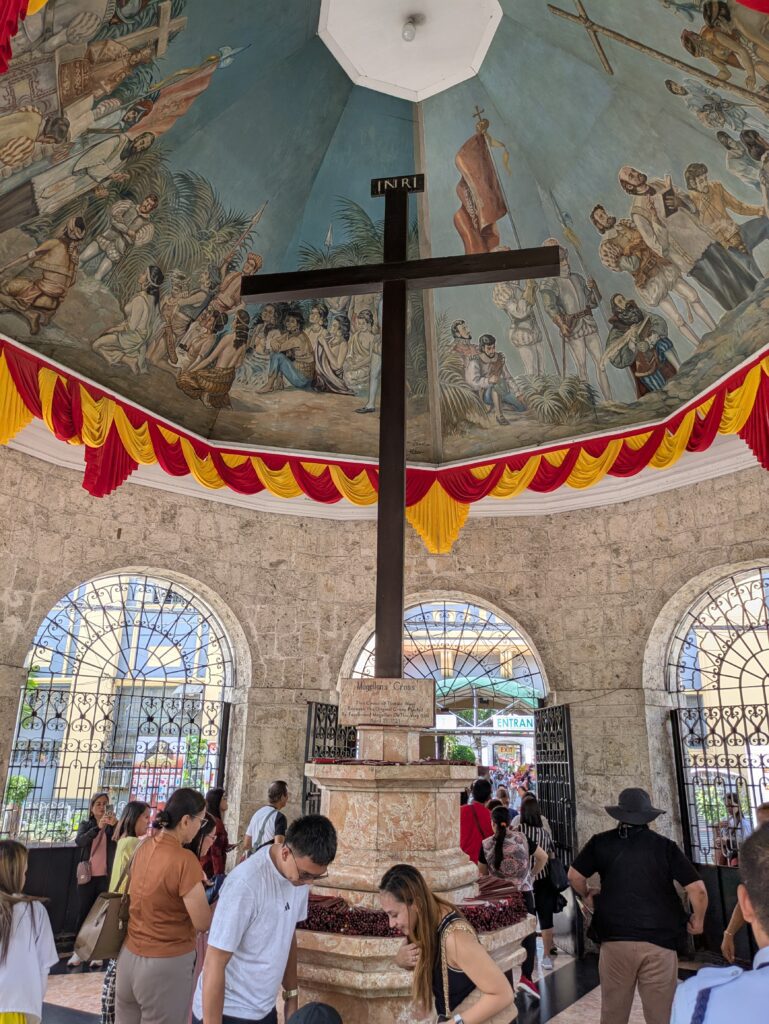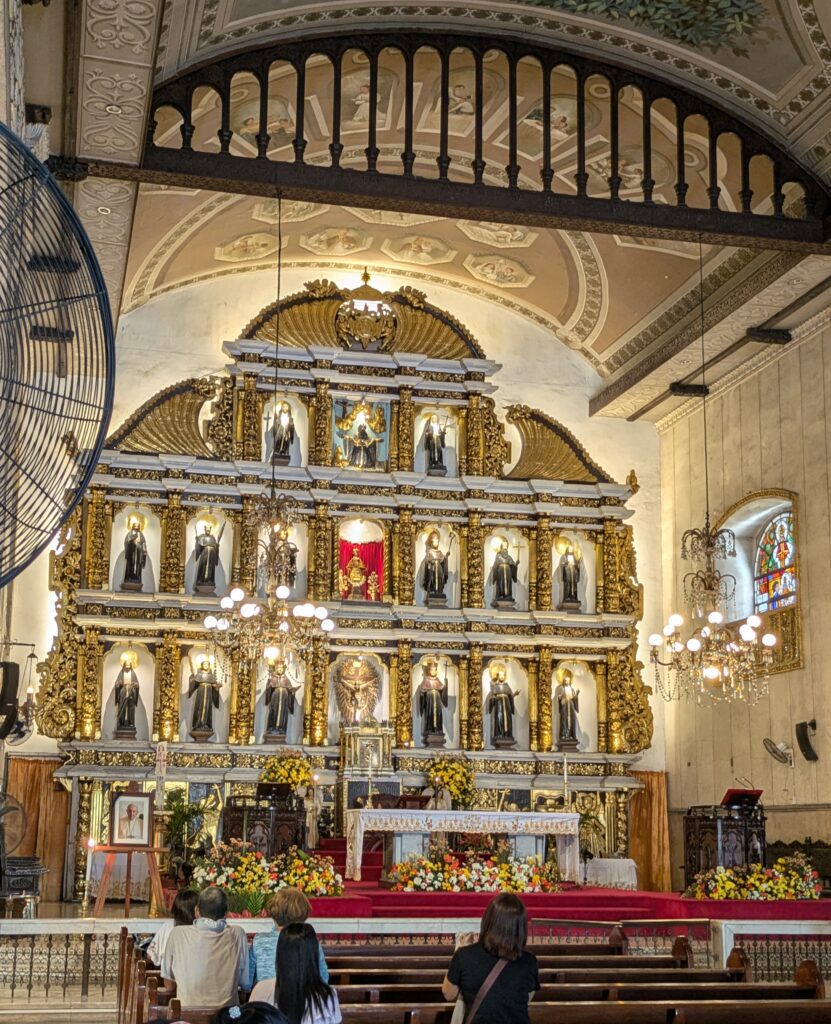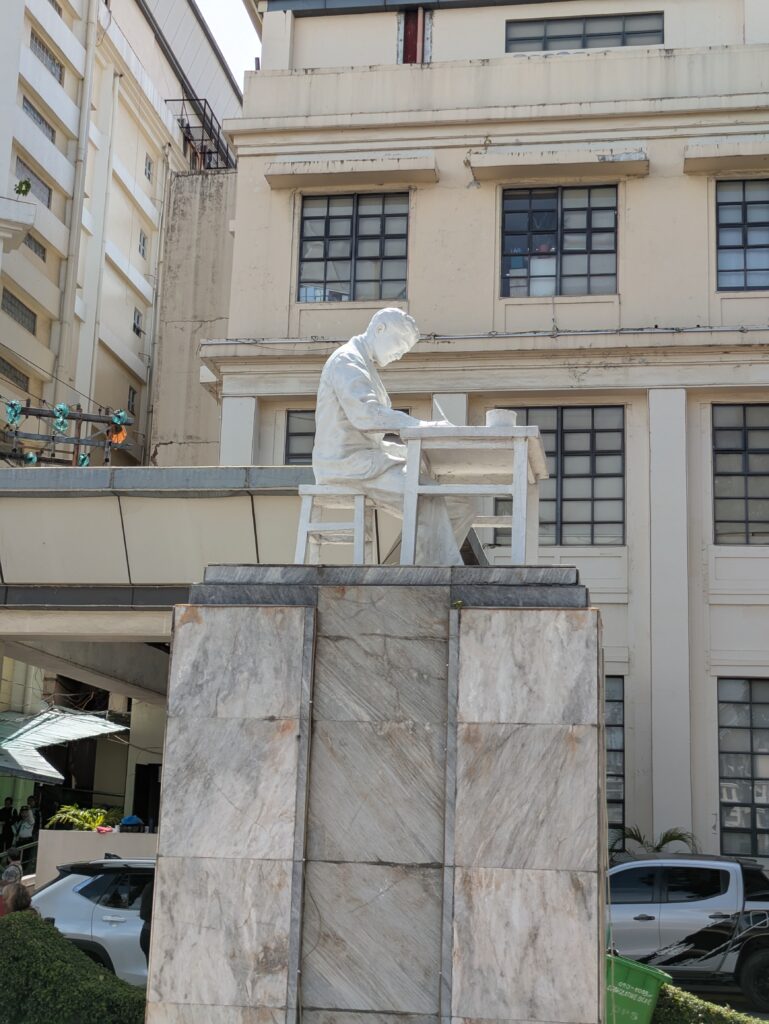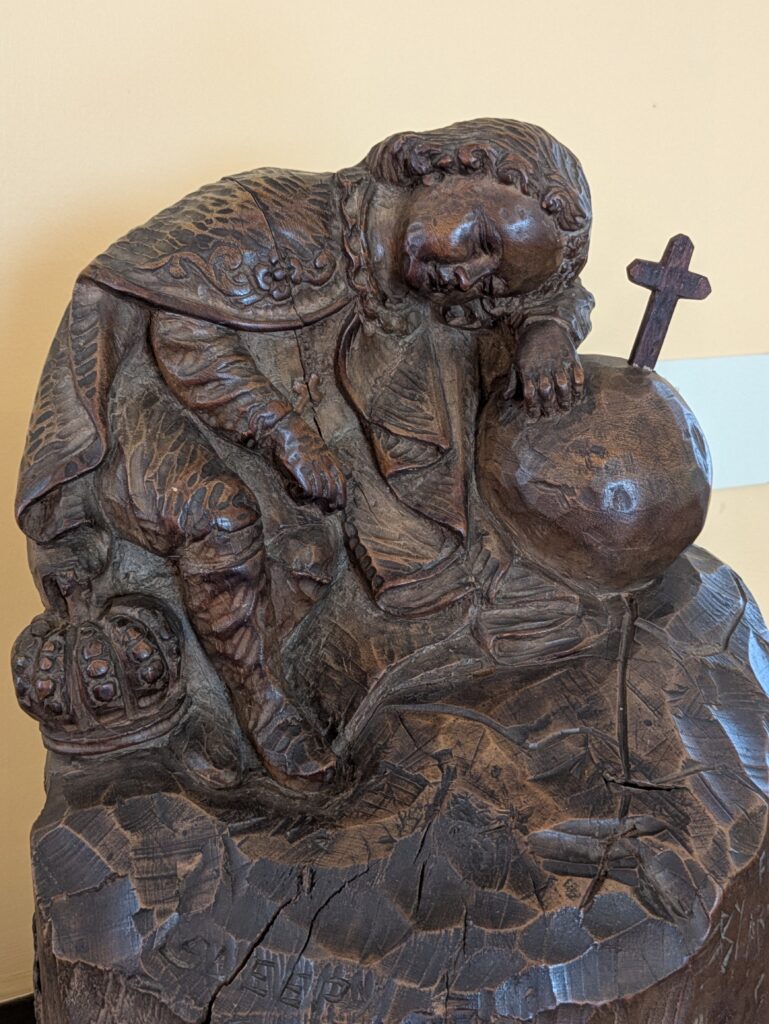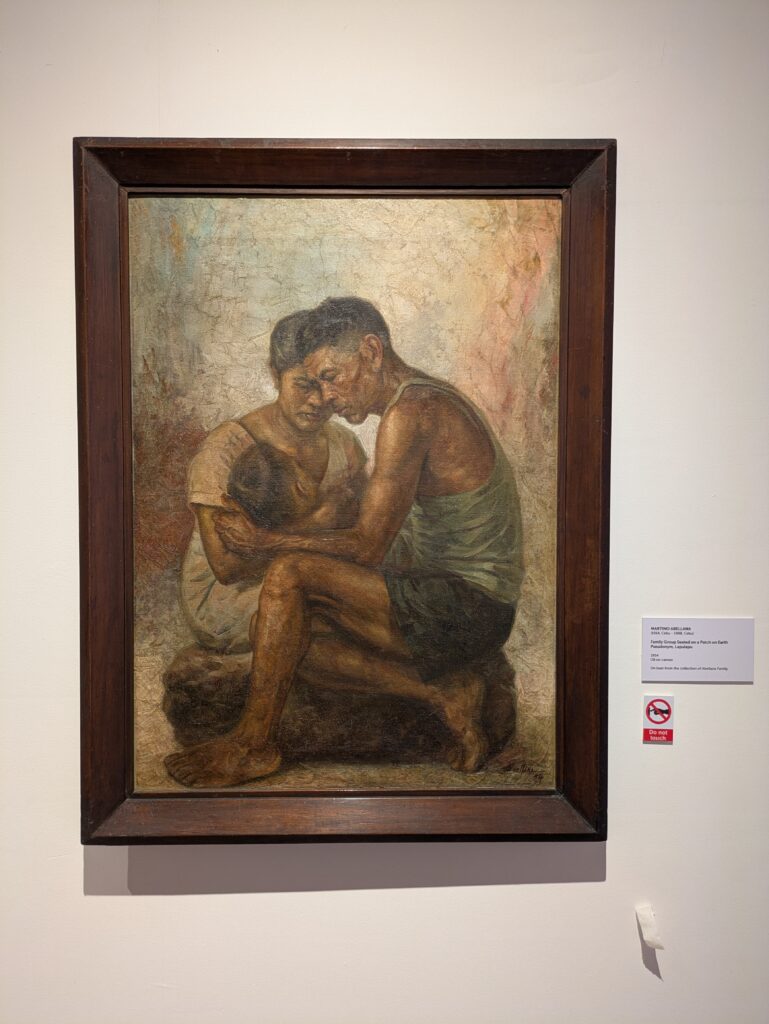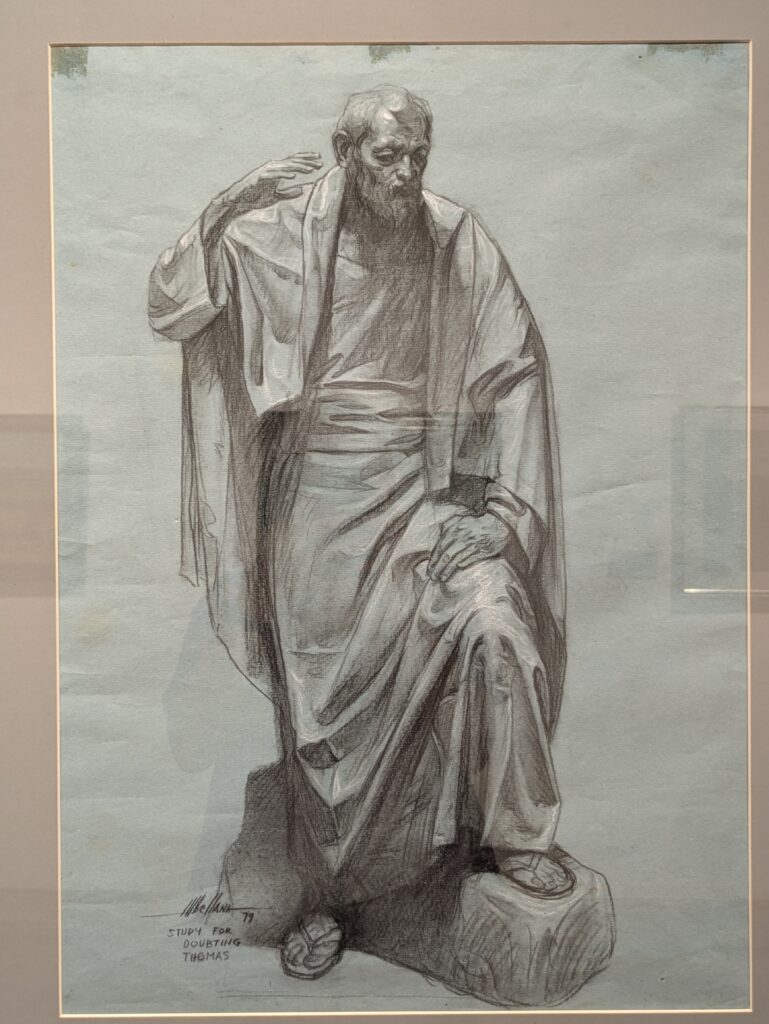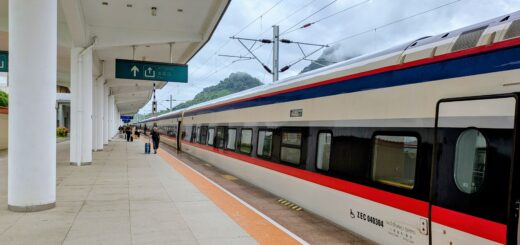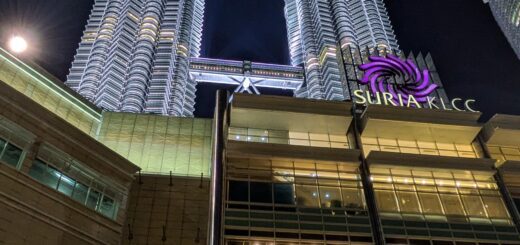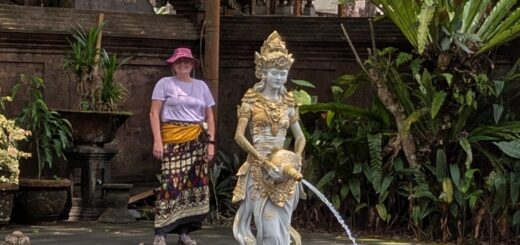Cebu, Philippines #27
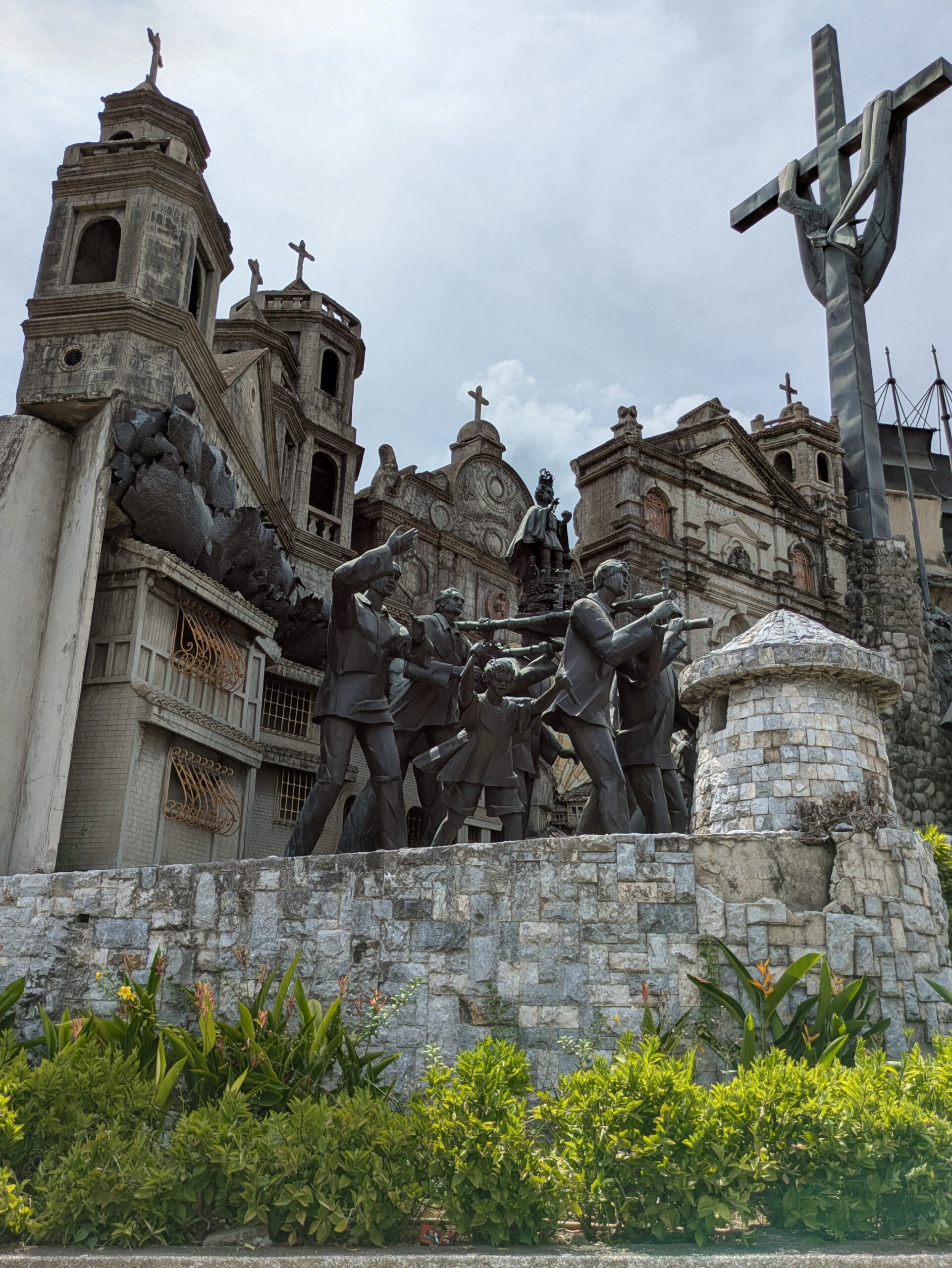
April 22,
Up and about by 0700. My throat is still very scratchy and I have a small bit of congestion. We spooned up our Java mixes and went for breakfast adding the hot water once in the dining area. We ordered: I had scrambled eggs and toast; Jeff went for the pancakes.
Out and about by 1000. We went walking sightseeing tour of Cebu near us. First on the agenda was Heritage of Cebu Monument. It was a great representation of heritage of the Filipino peoples through colonization to their revolution & then ultimately to their Republic, paraphrasing a placard at the monument. It was a large one and set in a small park setting, called Parian Park. The monument did have a large Cross and a Cathedral, Native Filipino warriors, Spanish Conquistadors with a Galleon ship, Chinese and Arabic men, American people and the Republic all symbolized. I admire the peoples embracing all of their history.
Secondly, we walked to Independencia plaza and by the OAR (Order of Augustinian Recollects) monument. It represented 400 years in Philippines from 1606 to 2006. (We later hear more about the order of the Augustinians). Right around this monument, we walked by The Plaza Independencia to, third point of interest, Fort of San Pedro. The foundation for this fort dates back to 1565, when it was a triangular wooden palisade,” built by members of a Spanish expedition for security. It cost us 30 PHP (53 cents) each for entry. The current fort is from 1739 and retains the triangle-shape. The thick walls are made of coral stone and mortar, and it has three bastions- La conception, San Ignacio de Loyola and San Miguel. It is very small for a fort!!! Inside the fort enclosure is a small chapel. The small footprint of ground is made up like a garden. There were placards with the History of Cebu and History of Fort San Pedro. The city of Cebu now manages the Fort of San Pedro as a National Shrine. We walked the fortified walls to each bastion. Then we exited and walked along the other side of Plaza Independencia.
Fourth place we went to was the The National Museum of the Philippines – it’s in the 1910 Customs House or the Aduana, that is American-established architecture. The museum was free. We walked through main area showcasing paintings of Magellan’s welcomed and peaceful landing; Magellan’s Cross planting; and then Magellan’s death. Then we meandered through five galleries: Cebu’s Natural Wonders; Cultural Movement Across the Seas; Architectural Structures- Spanish and American influenced; Images of Filipino Regional Cuisine; and lastly, Marino Abellana Works, a famous Cebuano artistic master. The last two were my favorites, but they all were well done. The photos of local cuisine was great- showing the growing and producing of foods with the people. But the last was my wheelhouse. Mr Abellana was an amazing artist. He lived from 1914 to 1988- some of the displays were from his last five years. I noticed his works were in many medias- drawings, water color, oil, and pastels. WOW, there were powerful pieces, that I would love to study!
Now we took a break for lunch. We choose KKD- it’s a grill place. We ordered a Green Mango with Bagoong (“It’s a shrimp mam”), Stuffed Grilled Bangus, and Garlic Rice. Jeff had a Calamansi juice, me a Mango shake. The Bagoong is a fermented shrimp paste, used as a dip in Filipino culture, and not what I was expecting. Jeff did not like it at all. I was able to eat tiny bits of it on the green mango, but I don’t need to eat it again. The stuffed Bangus was excellent! We finished and the bill came to 640, but Jeff gave 700 PHP since they didn’t have the change.
Now we continue on our venture tour of Cebu. The fifth stop was statue of Jose Rizal. Rizal is a Filipino “forefather,” so to speak. His writings helped advocate political reform and Philippine Independence. He was executed by a Spanish firing squad because of his writings that inspired the Philippine Revolution. Next and sixth was Magellan’s Cross. It is a covered pavilion with a wooden cross that is supposed to encase the original cross Magellan planted in 1521. It was a very busy site. Seventh and the last of our tour. Basilica Minore del Santo Nino. It was just before 1400 and the church was filling up. It was large inside, had a huge back-lit altarpiece, and had high vaulted ceilings painted with various depictions of Philippine history. We walked about the building and exited back through the main entry.
This ended our tour. We went to a local mall- a pharmacy and the supermarket; and then a second supermarket for a bottle of wine and cough drops. We stopped by and picked up our laundry Jeff had taken in this morning. Back to our place, we cooled off. Around 1800 we went back out and got supper at a local street vendor. We had X5 sticks of pork satay, two kinds of local made sausages, and a stick of a chicken leg and thigh. We took it back to our Inn and had it with our wine while watching some YouTube. Great day!
